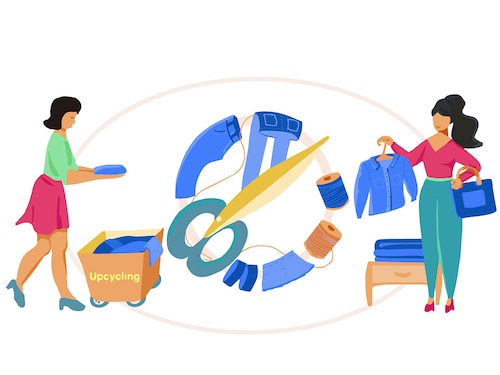Upcycling - The opportunity-perception paradox
Upcycled products can win over customers—if brands rethink design, perception, and purpose from the start


The theme for World Environment Day 2025 is ‘Ending Plastic Pollution’, along with ‘Encouraging Collective Action for a Sustainable Future’. Sustainability is gaining importance—not only among consumers but also within companies.
Recent surveys suggest that customers are willing to pay, on average, 9.7 percent more for products or goods that are sustainably produced or sourced. The global market for recycling waste, estimated at $63 billion in 2023, is expected to grow to $88 billion by 2030. This rise in conscious consumption has captured the attention of several global companies. For instance, Patagonia, an international clothing retailer known for its sustainable practices uses fabric from old jeans to design overnight bags. Southwest Airlines, an American airline repurposes leather from aircraft seats to create wallets and bags.
This process of transforming discarded or waste materials into a finished product with new utility is known as upcycling. However, within this opportunity lies a challenge: Many consumers perceive such ‘reincarnated’ goods as lower in quality. So, how can managers and product designers create a stronger appeal for upcycled products?
To resolve the paradox, recent research has identified a novel technique: Reduce the similarity of domains between the features of the upcycled material and the final product. For example, using aircraft leather to make wallets and bags fits this insight well.
Why does this work? When companies repurpose materials from a completely different domain, consumers experience an ‘aha’ moment—enhancing the product"s attractiveness. This behavioural insight is explained through the buyer’s decision-making flow (Figure 1).
 Figure 1: Buyer’s decision-making flow
Figure 1: Buyer’s decision-making flow
Once companies identify the right fit, they must deploy the upcycling strategy effectively:
In today’s sustainability-conscious world, upcycling presents an opportunity to refocus on waste reduction—a movement many Indian brands are embracing. For example, some now craft sunglass cases from old tyres.
By using components from unrelated product domains, companies can build upcycled products that delight customers and deliver on both purpose and profit.
This article is an adaptation of “Aha! That’s Creative!": How to Design Upcycled Products with Greater Appeal by Sukriti Sekhri Gupta, Assistant Professor of Marketing, published in the Management Practice Insights (MPI) journal of the S.P. Jain Institute of Management & Research (SPJIMR).
Views are personal.
First Published: Jun 04, 2025, 10:44
Subscribe Now